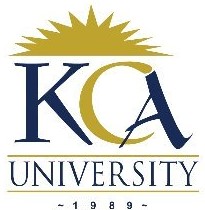 UNIVERSITY EXAMINATIONS: 2018/2019
UNIVERSITY EXAMINATIONS: 2018/2019
EXAMINATION FOR THE DIPLOMA IN BUSINESS INFORMATION
TECHNOLOGY
DBIT306 OBJECT ORIENTED ANALYSIS AND DESIGN
DATE: NOVEMBER, 2018 TIME: 2 HOURS
INSTRUCTIONS: Answer question ONE and any other TWO questions.
QUESTION ONE COMPULSORY (30 MARKS)
a) Distinguish between OOA and OOD processes (4 Marks)
b) Draw an object diagram for the following scenario. (4 Marks)
The customer object (C) is associated with three order objects (O1, O2 and O3). These
order objects are associated with special order and normal order objects (S1, S2 and N1).
The customer is having the following three orders with different numbers (12, 32 and 40)
for the particular time considered.
For orders the values are 12, 32, and 40 which implies that the objects are having these
values for the particular moment .
The same is for special order and normal order objects which are having number of orders
as 20, 30 and 60.
c) Distinguish between the following: (4 Marks)
i) Class and Object
ii) Base class and derived class
d) Outline four strengths of OOP. (4 Marks)
e) State four advantages of robustness analysis. (4Marks)
f) When a customer goes to shop in a super market, he/she starts by filling all the items they
need in the trolley. The customer then pushes the trolley to the cashier who calculates the
total cost of all the items and presents the same to the customer. Thereafter, the customer
may decide to pay in cash or present a credit card.
The credit card is then swiped by the cashier through a card reader that debits the same
from the customer’s account. The cashier then returns the card to the customer.
Required: Draw a Use Case diagram for the above scenario. (5 Marks)
g) A university wants to set up a database to record details about its staff, and the
departments they belong to. They intend to record the following information. For each member of staff, their staff identity number, name, job title, and
salary.
For each department, its name and address. For each member of staff, all departments that they belong to. It is required
that every member of staff belongs to at least one department.
For each department, the head of department. It is required that each
department has exactly one head of department.
Required: Draw a Class diagram. (5 Marks)
QUESTION TWO
a) With the aid of model symbols and notations briefly explain each of the following UML
diagrams. (9 Marks)
i) Sequence diagram
ii) Activity diagram
iii) Object diagram
b) Using relevant examples explain the three types of relationships (use of diagrams is highly
recommended) (6 Marks)
c) Explain disadvantages of OOP. (5 Marks)
QUESTION THREE
a) With the aid of well labelled diagrams explain five types of inheritance as used in the field
of object oriented programming. (10 Marks)
b) Explain the symbols and notations used in a use case diagram (4 Marks)
c) Communication between any two objects is accomplished through the sending and
receiving of messages through the functions or methods of the participating objects. With
the aid of symbols give four different types of messages that an object can send. (4Marks)
d) What is Object Oriented programming? (2 Marks)
QUESTION FOUR
a) A bus company has several buses and drivers. The company has one garage and covers
several routes. At any one time, some buses will be on routes whilst others are garaged.
Individual buses are used on any route and drivers are allocated to any bus. Each route
has only one bus travelling on it at any one time. Passengers may have to take more than
one bus on a journey.
Required: Draw a class diagram depicting all the objects and their accompanying attributes and
relationships. (5 Marks)
b) Differentiate between: (8 Marks)
i. Software coupling and cohesion
ii. State and behavior
iii. Active object and dependency
iv. Fork and Join
c) Define the following terms as used in OOP. (5 Marks)
i. Private member
ii. Public member
iii. Protected member
iv. Encapsulation
v. Abstraction
e) Define robustness analysis. (2 Marks)
QUESTION FIVE
a) Draw a UML class diagram for the people within the University: (4 Marks)
Provide a class person. A person may be a citizen or foreigner male or female. Each
person may play the role of a student or employee. Employee can either be professor or
registrar. Student may be undergraduate, master student or Ph.D. student.
b) Structured approach of software development could not cope with the increasing
demand for complex software leading to a software crisis. Discuss. (6 Marks)
c) Explain the importance of using USE CASE diagrams. (4 Marks)
d) Explain the characteristics of an object. (6 Marks)
